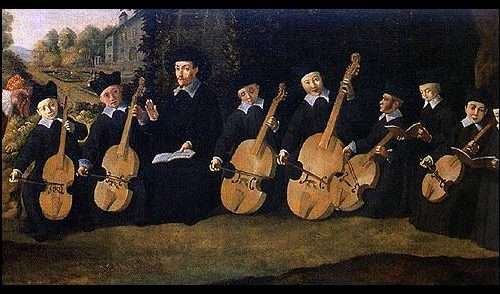
The specificity of playing the accordion
Due to its structure and original sound, the accordion is one of the most interesting musical instruments. It is used in almost every musical genre, from classical to entertainment and jazz music. It works perfectly as an independent solo instrument, but it can also be an accompanying instrument or be an integral part of a larger musical composition.
Solo play on the accordion
The accordion can be included in the small group of self-sufficient instruments, i.e. those that can handle, for example, a special event. For example, it is impossible, for example, to listen to a solo play of even the most wonderful trumpet player for an hour, because it is a typical ensemble instrument. In the case of the accordion, we can easily listen to an hour-long concert of a good accordionist. Here in one instrument we have both a melody played with the right hand and a rhythm section played with the left hand.
Accordion as an accompanying instrument
The accordion will also be perfect as an accompanying instrument, e.g. for a vocalist, or as an accompanying instrument providing some kind of background and filling, e.g. for a violin. In this type of play, the basses constitute the background music that constitutes such a rhythmic-harmonic core, and the right hand plays, for example, a second voice or also acts as a harmonic accompanist.
Why is the accordion such an interesting instrument?
First of all, its tonal variety is very interesting. When it comes to acoustic instruments, it can be successfully counted among the leaders in the group of instruments with a wide range of sounds. This is due to the fact that the accordion consists of several such elements that could well be separate musical instruments. We are talking about loudspeakers, which are the most important and valuable components of the accordion. Each of these speakers is equipped with reeds that are properly tuned to obtain the desired sound. Such loudspeakers in the accordion can be on the melodic side, i.e. where we play with the right hand, e.g. two, three, four or five and we commonly call them choirs. Hence, when buying an accordion, apart from the amount of bass, often the decisive factor in choosing a given instrument is the number of choirs you have. The more choirs an instrument has, the richer the sound it has. Thanks to the registers, we control which choirs the air forced through the bellows is to reach and stimulate the reeds to sound. If we open the access to two or more choirs by pressing a key once, or in the case of a button accordion, we get a double, triple or quadruple sound characteristic only for the accordion. And this is the effect we get by pressing only one key or button, and we have five fingers in our right hand, so you can imagine how interesting we can get a full sound if we use all five fingers at the same time.
We play with the left hand on the bass side, which is built in such a way that the sounds produced by themselves constitute an accompaniment. The bass side is constructed in such a way that the basses in the first two rows are single basses, which we can compare, for example, to the role of a bass guitar in a musical band, while the subsequent rows are chord basses, i.e. the whole chord plays us with the press of a button, e.g .: major or minor and referring it to a musical ensemble, they play the role of such a rhythm section, for example, in brass. Thanks to this solution, the accordion alone can achieve an effect similar to the rhythm section.
The accordion is a one-of-a-kind instrument and thanks to its structure and sound it has an amazing creative potential that can be used in any musical genre. Learning on it is not the simplest, and especially at the beginning the student may be scared by the bass side, on which we have to move in the dark. However, after overcoming the first difficulties, the bass is no longer a problem, and the game itself gives great satisfaction.





